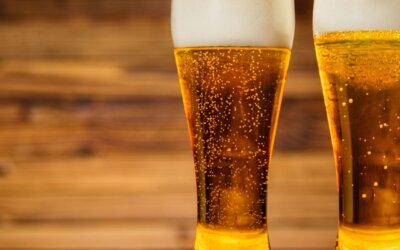Introduction: Join me on a journey as we explore the origins of melon liqueur, a delightful libation that has captivated palates for centuries. From its humble beginnings to its widespread popularity in cocktails today, the story of melon liqueur is as rich and vibrant as the drink itself.
Ancient Roots: The history of melon liqueur traces back to ancient civilizations where melons were first cultivated. In regions such as Asia and the Mediterranean, melons were prized for their sweet flavour and refreshing qualities. Egyptians and Greeks were among the earliest to cultivate and consume melons, using them in culinary dishes and medicinal preparations.
Early Infusions: As trade routes expanded and cultures interacted, the use of melons in alcoholic beverages became more prevalent. In Europe, monks and alchemists experimented with infusing various fruits and herbs into spirits, laying the groundwork for modern liqueurs. Melons, with their natural sweetness, proved to be an excellent candidate for infusion.
One of the earliest recorded instances of melon liqueur can be traced back to Italy in the 15th century. Italian monks, renowned for their expertise in herbalism and distillation, developed a liqueur known as “meloncello” by infusing ripe melons with alcohol and sugar. Meloncello gained popularity among the aristocracy and elite circles, cherished for its unique flavour and perceived medicinal properties.
Evolution and Innovation: As trade continued to flourish between Europe and Asia, the popularity of melon liqueur spread to other parts of the world. In France, renowned for its culinary traditions, distillers began experimenting with different varieties of melons to create distinctive liqueurs. It was in France during the 18th century that the iconic green hue of melon liqueur first emerged, thanks to the addition of natural coloring agents such as chlorophyll.
The invention of the column still in the 19th century revolutionized the production of liqueurs, allowing for greater precision and consistency in flavour. Distillers could now extract the essence of melons more efficiently, resulting in a more refined and vibrant liqueur. This technological advancement, coupled with the growing popularity of cocktails, propelled melon liqueur into the mainstream.
Modern-Day Delights: Today, melon liqueur remains a beloved ingredient in cocktails and mixed drinks, cherished for its versatility and vibrant flavour profile. From the classic Melon Ball to the innovative Midori Sour, mixologists continue to find creative ways to showcase the distinct taste of melon liqueur.
The most famous and widely distributed melon liqueur brand, Midori, was introduced in Japan in 1978. Named after the Japanese word for “green,” Midori quickly gained international acclaim for its smooth texture and intense melon flavour. Its success paved the way for other melon liqueur brands to enter the market, further cementing the drink’s place in cocktail culture.
Conclusion: The journey of melon liqueur from ancient times to the present day is a testament to the ingenuity and creativity of cultures around the world. What began as a simple infusion of melons and alcohol has evolved into a global phenomenon, enjoyed by cocktail enthusiasts everywhere. Whether sipped neat or mixed into a refreshing cocktail, melon liqueur continues to captivate our senses and delight our palates, reminding us of the rich history and cultural heritage behind every sip.




